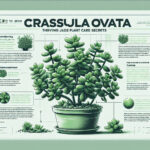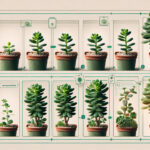Introduction to Crassula Ovata
Dive into the world of the jade plant, Crassula ovata, and learn why selecting the proper soil is crucial for its health and beauty. The success of growing a lush and vibrant jade plant lies in understanding its natural habitat. Originating from the rocky hills of southern Africa, this succulent has adapted to flourish in well-draining and nutrient-poor soil. It’s this very resilience that captivates plant enthusiasts and encourages a deeper look into replicating the perfect soil conditions at home.
Why The Right Soil Matters
You wouldn’t wear ski boots to a marathon, right? Similarly, jade plants won’t thrive in improper soil. Just like a runner’s performance is influenced by their gear, the well-being of your Crassula ovata is significantly affected by the soil you choose. The importance of soil for a jade plant cannot be exaggerated—it’s the foundation that affects water retention, nutrient availability, and root aeration, ultimately dictating the plant’s health and growth.
Analyze any thriving jade plant, and you’ll discover that its vigor is rooted in the soil it calls home. This is a real-life example of how choosing a soil blend that mimics its native habitat’s rocky terrain will promote strong root development, prevent water-logged roots, and deter common succulent ailments like rot.
Imagine you’re at the beach, building a sandcastle. The sand may hold shape when wet, but it quickly crumbles once it dries. Think of your Crassula ovata‘s soil like that sandcastle. The right soil mix needs to maintain structure to support the plant yet allow excess water to drain rapidly. Learn how to mix the perfect potting medium from a proven source to ensure your jade plant’s roots are as sturdy as a well-fortified castle.
Remember, the right soil can make or break your jade plant’s success. Whether you’re a seasoned gardener or a newbie with a green heart, understanding and choosing the right soil for your Crassula ovata is a secret worth knowing. As we further explore the essentials of jade plant care, keep in mind that every choice, from soil to sunlight, shapes the destiny of your green companion. Stay tuned for more cultivation secrets that will elevate your gardening game.
Understanding Crassula Ovata’s Natural Habitat
If you’ve ever marveled at the sturdy, glossy leaves of a Crassula ovata—more affectionately known as the Jade Plant—you might have wondered about the origins of this plump-leaved beauty. Knowing where a plant comes from can be like unlocking a secret code to its cultivation success. So, let’s don our explorer hats and trek into the natural habitats of the Jade Plant to glean some soil and climate wisdom!
Imagine the warm, semi-arid zones of South Africa—this is where our succulent friend calls ‘home.’ Picture this: robust Crassula ovata, basking under the golden sun, the soil beneath them a unique mixture that drains quicker than you can say “perfect succulent substrate.” It’s a gritty, sandy affair that holds just enough moisture to say “I care,” but not so much that it becomes clingy. This balance prevents rot, which is basically kryptonite to our succulent superheroes.
Why is this significant? Because replicating these conditions in your own potting mix is like giving your Jade Plant a first-class ticket back to its comfort zone. Thankfully, you don’t have to travel all the way to South Africa to achieve this—though that would be quite the adventure! The secret lies in blending ingredients like coarse sand, perlite, and organic matter to cook up the ideal home-grown soil mix—a feast for roots seeking both nutrients and good drainage.
Now, let’s peek into our article that unravels the mystery of the perfectly crafted soil merge for your resilient Crassula ovata. It’s not just about the ‘what,’ but also the ‘how.’ Because, you see, even a plant as forgiving as the Jade Plant appreciates a little TLC in the ground department.
Visual learner? Check out this insightful video which pertains to the natural habitat and how it informs the best care for your Jade Plants:
While we can’t mimic nature in all its glory, we can sure try our best to create a mini haven for Crassula ovata. It’s the little details, from the texture of the soil to the frequency of waterings that echo of their African landscapes, which foster a thriving plant environment. So, as we bring our exploration to a temporary rest stop—don’t worry, there’s no conclusion here—remember: the key to nurturing your own Jade oasis lies in the understanding of its ancestral soils. And following the well-drained path, you just might find your green thumb turning Jade!
Key Components of the Ideal Soil Mix
Let’s dig into what makes Crassula ovata, the beloved jade plant, really thrive. Picture yourself mixing a decadent chocolate cake batter – the balance of ingredients is crucial for that perfect moist texture. Similarly, the ideal soil mix for your green gem is a game of mixology that plays a big part in its health and happiness. The foundation of this perfect blend hinges on three pillars: aeration, drainage, and nutrient content.
Aeration is the silent hero; just like we relish a breath of fresh air, jade plants exult when their roots find room to breathe. Think of it as the countryside retreat for roots where they can stretch out and relax. A chunky, well-aerating mix allows oxygen to reach the root zone, encouraging robust growth. Perlite or pumice mixed into the soil resembles the airy pockets in a sponge cake, providing that much-needed oxygen boost.
Now, let’s swirl in drainage – the fair-weather friend who tells excess water, “You can’t sit with us!” Quick drainage is a lifesaver, preventing the dreaded soggy feet that can spell doom for your succulent companion. With ingredients like coarse sand or fine gravel, your soil mix will emulate a free-flowing waterfall, guiding excess water away with ease.
Last but certainly not the sweetness we’ve forgotten, the nutrient content is the flavor kick, the spice that brings zest to your plant’s life. An appropriate dose of compost or worm castings can be the equivalent of a nutrient-infused espresso shot for your Crassula. Yet, much like a potent brew, a sprinkle is often enough—you don’t want to overwhelm their delicate system.
Imagine your Crassula ovata dancing in its pot, buoyed by the perfect soil mix—it’s a sight of pure contentment. But remember, each plant has its own personality. For a deeper dive into the unique care habits of these succulents, explore their world further in this engaging read on Exploring Crassula: The World of Jade Plants Unveiled.
Witnessing the vibrant growth of your Crassula in response to the ideal soil mix is a gratifying experience akin to the first blooms of spring. Resilient yet refined, this soil mix serves as the stage for your plant’s lifelong performance. So let’s give them the standing ovation they deserve, starting with their very foundation — a superb soil concoction!
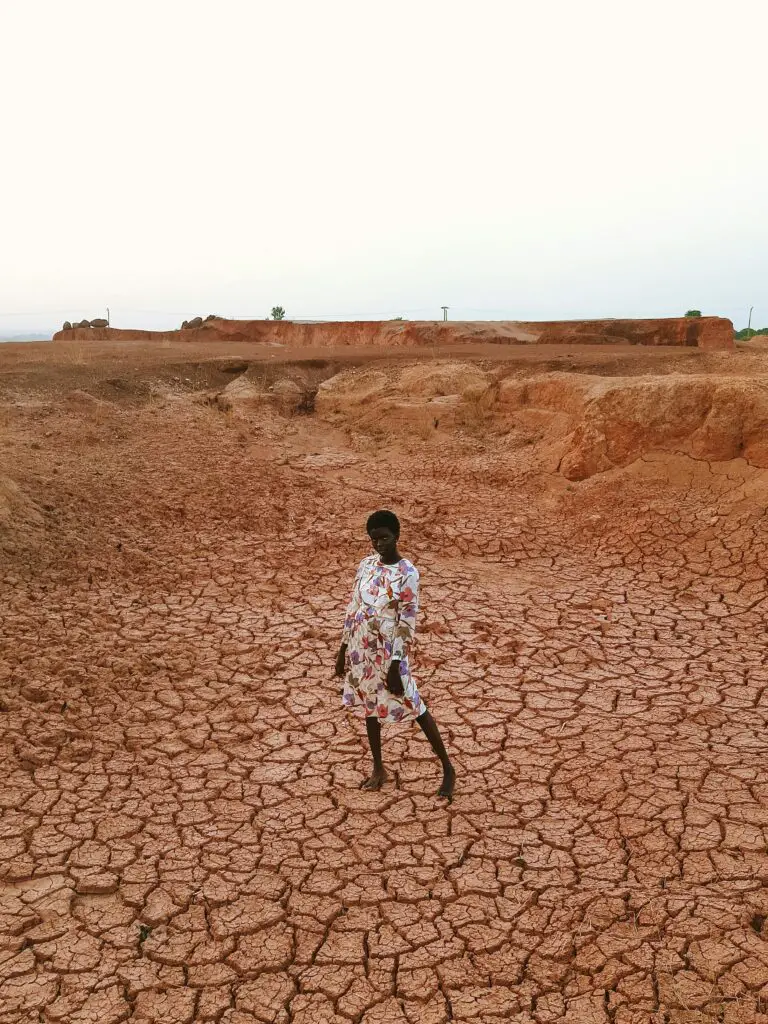
DIY Soil Recipes for Your Crassula Ovata
Got a green thumb and a soft spot for the plump leaves of Crassula ovata, commonly known as the Jade Plant? Perfecting the soil mix is like crafting a gourmet meal for your leafy friend—it’s essential for its health and longevity. So, ready to roll up your sleeves and get a little dirt under your nails? Let’s dive into some do-it-yourself soil concoctions that your Crassula will adore.
Before we spill the beans on the perfect soil recipe, let’s set the stage. Impeccable soil for Crassula ovata isn’t just about giving it a cozy bed to lie in; it’s about ensuring moisture control, aeration, and a steady diet of nutrients. Consider yourself the Michelin-starred chef of the botanical world, tasked with concocting the ultimate earthy mixture.
Ingredient Spotlight: The Foundation of a Flawless Mix
Whip up a base layer with equal parts potting soil and coarse sand. The potting soil brings in those yummy organic elements, while the coarse sand invites breathability and drainage—non-negotiables for preventing root rot in these succulent beauties.
But remember, no two Jade Plants are the same. Just like how some people prefer an extra dash of cinnamon in their apple pie, your Crassula may demand a tweak here and there. Is your plant lounging in a humid bathroom? Modify that base with a bit more sand. Basking in the arid climes of an indoor sunspot? Amp up the organic matter to hold onto moisture just a smidgen longer.
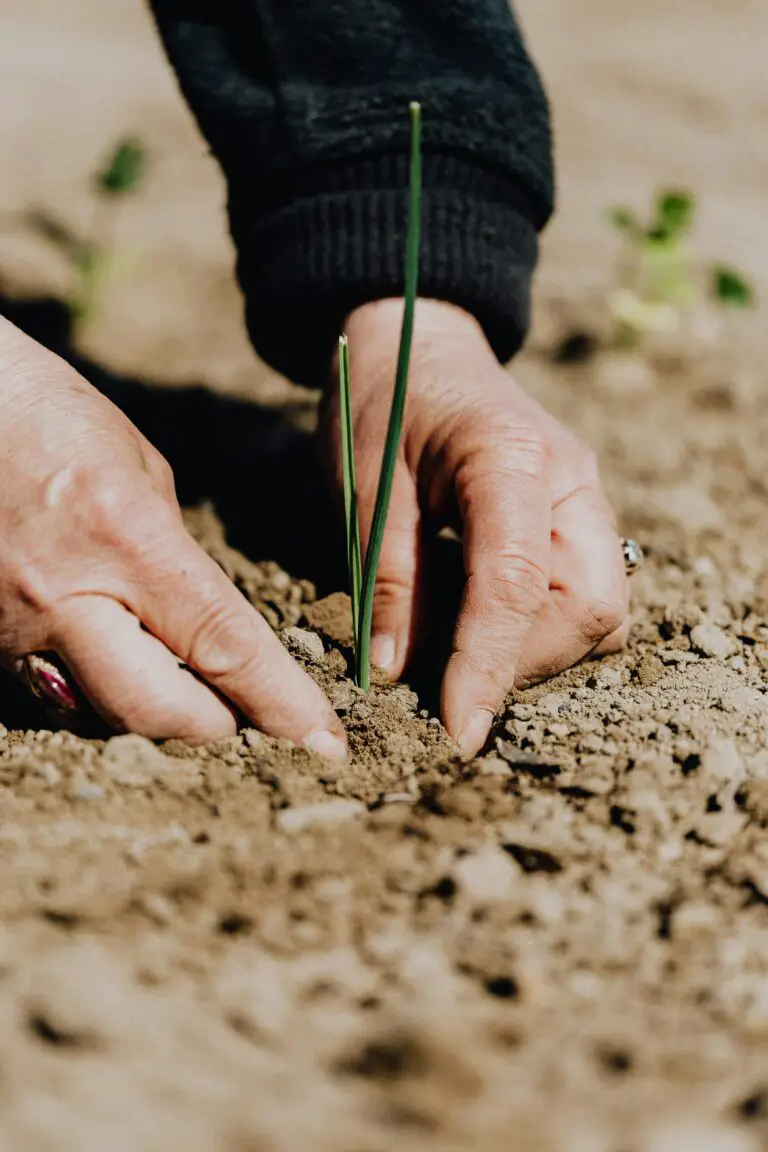
Adding Piquancy: The Secret Extras
Now that you’ve got your base, let’s jazz it up. Perlite or pumice comes into play here, adding that light, airy texture that Crassula roots crave. Picture them as the little bubbles in a soda, providing oxygen-rich spaces for roots to thrive. Toss in some horticultural charcoal to sweeten the pot—it keeps the mix fresh and fends off bacterial and fungal villains.
Of course, let’s not forget the palate-enlightening garnishes. A sprinkle of worm castings or a smidgen of bone meal brings in nutrients slowly and steadily, offering a balanced diet without overwhelming our succulent guest of honor.
As you mix and match these ingredients, take pride in your creation. You’re not just stirring soil; you’re engineering a habitat. Once you’ve planted your Crassula ovata in its new home, watch it respond with gusto—thicker stems, more vibrant leaves, and a vitality that says, “Thanks for the gourmet twist.” Still thirsty for more tips? Take a peek at our guide on Crassula sizes and care to ensure your succulent not only survives but thrives.
The Role of Soil pH in Jade Plant Health
Ever wondered why some Crassula ovata plants burst with health while others barely cling to life? The secret is often hidden in the details, and the pH level of the soil is one such critical detail. Imagine you’re whipping up your favorite dish; all ingredients need to be in perfect harmony. That’s exactly how your jade plant views soil pH — it’s a make-or-break ingredient for its wellbeing.
Crassula ovata, commonly known as the jade plant, is quite the resilient character in the succulent family. However, its hardiness doesn’t make it immune to the effects of unsuitable soil conditions. A soil pH that’s slightly acidic to neutral — think in the range of 6 to 7 — is the sweet spot for these glossy green beauties. Stray too far from this range, and it’s akin to walking a nutritional tightrope, with your plant’s health hanging in the balance.
Adjusting soil pH is similar to tuning a guitar: it requires precision and patience. If your jade plant is living in soil that’s too alkaline, it might be deprived of iron, leading to a case of chlorosis, where the leaves turn yellow due to lack of chlorophyll. Too acidic, and the roots might find themselves in a battle with toxic minerals. The result? A plant that looks more sorry than splendid. But don’t fret — adjusting pH isn’t alchemy. It can be as simple as adding garden lime to raise the pH or sulfur to lower it.
Here’s where things get hands-on — maintaining the perfect pH level is an ongoing affair. You’re the DJ in this club, and the beat must go on! Consistent soil testing is your best friend, along with amendments that keep the pH grooving in the right zone. Nitrogen, for example, tends to lower soil pH over time, so you’ll need to monitor and adjust accordingly.
Real-life examples abound of gardeners who played the pH game and won. Take Sarah, who noticed her jade plant looking a bit off. A quick soil test revealed the pH was too high. A little sulfur later, and her plant was back to dropping jaws with its lush foliage. Then there’s Mike, who found out his tap water was too acidic and was inadvertently pushing his jade plant’s soil pH down. A switch to filtered water, and his problem was as good as solved. Simple fixes for what could have been head-scratchers!
When and How to Repot Your Jade Plant
Is your Crassula ovata starting to overtake its current home? It might be time to consider repotting, and you’re in luck—this guide will steer you through the when, the how, and the soil specifics for your plump-leaved friend. Let’s dive into when it’s prime time to give your jade plant room to flourish.
Timing is Everything
Understanding when to repot is as crucial as the repotting process itself. Springtime is the universally accepted season for such tasks. Why? Plants like your jade are awakening from their winter rest and gearing up for a period of vigorous growth. Repotting during this time aligns with their natural cycle and reduces stress. So, when those first warm breezes start to swirl, grab your gloves – it’s repotting time!
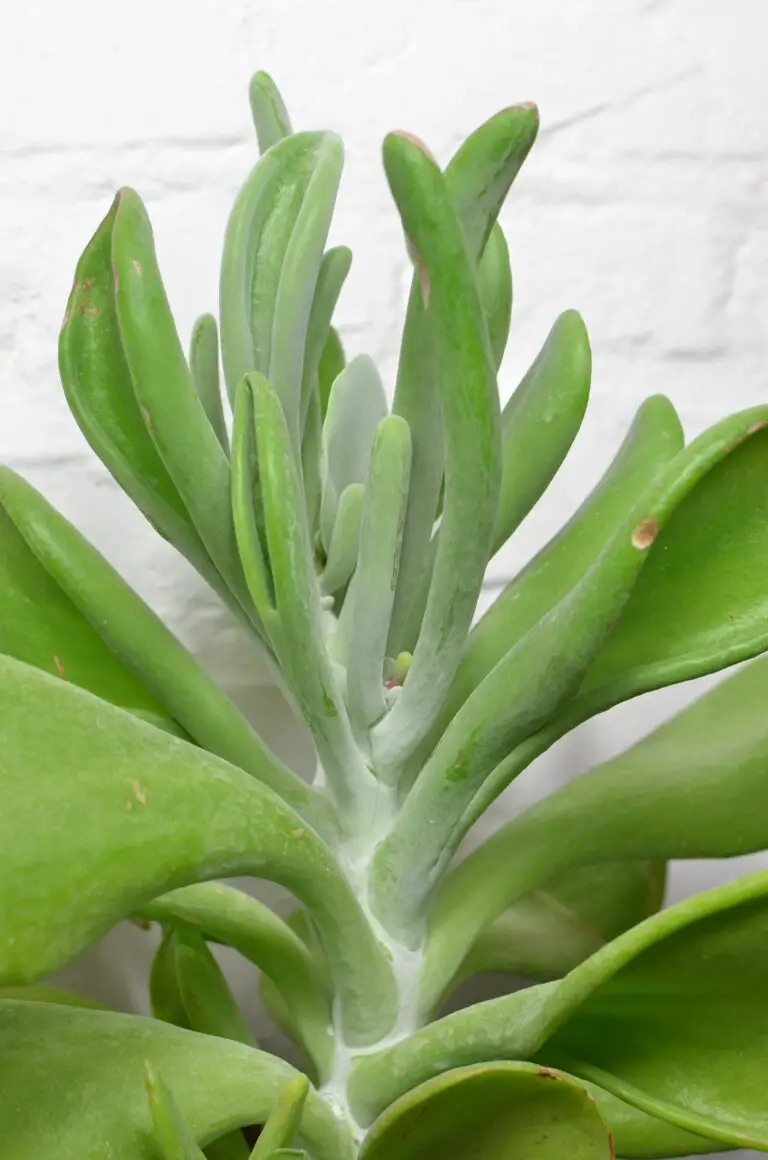
Choosing the Right Pot
Before you start the repotting dance, selecting the proper pot is a step you cannot skip. Think of it as matchmaking – you want your jade plant to have the perfect partner. A pot that’s too large can lead to soil that stays wet for too long, while a snug fit will leave no room for growth. Aim for a pot that’s about 20% to 25% larger than the current one for that sweet spot.
Let’s Talk Soil
You wouldn’t plant a water lily in the desert; similarly, don’t underestimate the importance of the right soil mix for your jade. A well-draining, gritty mix does wonders for preventing root rot and providing just enough anchorage for those strong roots. You might even consider a specially formulated succulent or cactus mix from your local garden center – just ensure it whisks away moisture like a charm.
Repotting Techniques
Now for the main event—repotting. Gently coax your Crassula ovata out of its current dwelling; you’re aiming to disturb the roots as little as possible. Peek at the root ball—healthy roots are white and firm. Trimming any wayward or dead roots is a good practice. Then, settle your jade into its new abode, shaking hands with fresh soil and ensuring it’s seated at the same depth as before. Water sparingly at first, allowing your jade to adjust and root itself with confidence.
Remember, even though repotting might seem intimidating, it’s like helping a friend move to a bigger, better home. Done at the right time and with the right care, your Crassula ovata will thank you with lush growth and possibly even blooming accolades. Cheers to happy and healthy repotting!
Common Soil-related Issues and Solutions
When it comes to raising a prosperous Crassula ovata, more commonly known as the Jade Plant, the foundation of success lies beneath the surface—yes, we’re talking about the soil! But what happens when this cornerstone becomes the very source of trouble? Let’s dig into the dirt on some typical soil-related issues that might besiege your Jade Plant and unearth the secrets to fixing them.
Imagine this: you’ve got your Crassula ovata displayed proudly in your home, yet, despite your efforts, its leaves start to droop or develop unsightly spots. Before you start pointing fingers at the nearest watering can, consider the possibility of a much more subterranean culprit. Poor soil conditions can unleash a host of ills, from water retention nightmares to nutrient deficits that leave your plant pining for more.
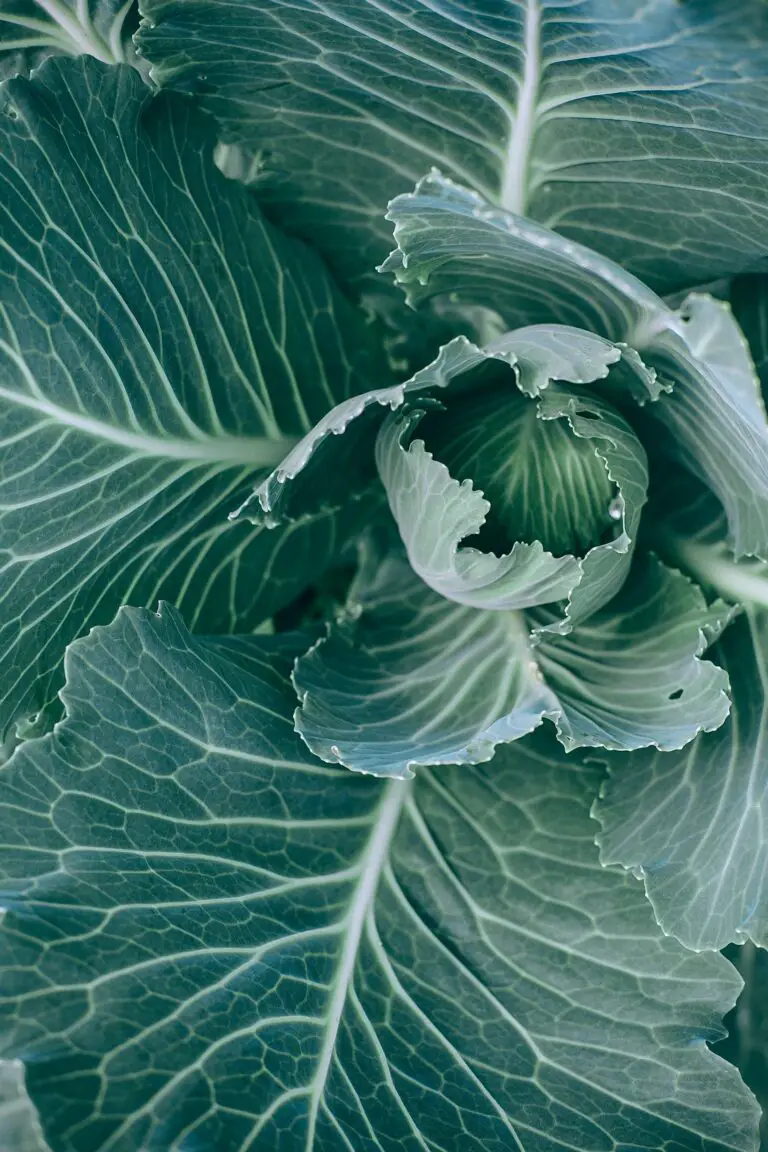
Take the issue of drainage, for instance. A Jade Plant’s roots abhor being waterlogged. When the soil resembles a swamp more than a nurturing medium, you’ll be waving a red flag at root rot. The remedy? A gritty, loose, and well-draining mix that makes excess water runoff its least priority, while the roots remain as quenched as a camel in the desert—hydrated, not drowned.
Fighting Compaction and Ensuring Aeration
It’s not just about avoiding the wet feet dilemma. Soil compaction is like leaving your Crassula ovata gasping for air. When the roots can’t breathe, the plant can’t thrive. Our solution is simple but effective—introduce materials like perlite or coarse sand that scoff at compaction and promote a well-aerated environment. Imagine each granule creating tiny pockets of air, holding hands and singing Kumbaya around your Jade Plant’s roots!
Battling Nutrient Deficiency With Fortification
Even with perfect watering, if your Crassula ovata’s soil isn’t nutrient-rich enough, it’s like asking an athlete to run a marathon on an empty stomach. Eek! To combat this, treat your Jade’s soil to a balanced diet of slow-release fertilizers. Choose one that’s gentle enough to prevent chemical burns but robust enough to give your green buddy the variety of nutrients it craves, ensuring it stands tall and proud as if it’s displaying its own collection of medals.
While these tips can lead you out of the soil sorrows and into the garden of growth, remember that every plant has a personality of its own. What works for the Jade Plant next door might not be the winning formula for yours, and that’s okay. It’s about learning, adapting, and maybe having a laugh at the quirky demands of these succulent characters. Get your hands dirty, and your Crassula ovata will surely reward you!
Frequently Asked Questions
Enter the world of Crassula ovata, or as many know it, the resilient Jade Plant. Known for its lush, green leaves that resemble precious gems, this succulent is a favorite among houseplant enthusiasts, but it thrives when paired with the perfect soil. Let’s dig into the dirt and uncover the secrets to a flourishing Jade!
What is the best pot size for Crassula ovata?
Size matters! For juvenile Jade Plants a cozy pot makes for a snug home, nudging those roots to multiply robustly. Yet, as they grow, aspirations do too—upsize incrementally to let those ambitions (and roots) spread out. Think of it like a hermit crab; as it grows, it seeks a bigger shell to call home!
Can I use regular potting soil for my jade plant?
While regular potting soil can be a start, Crassula ovata prefers a blend more akin to its natural, arid havens. Aim for a mix that’s one part gritty to foster drainage, resembling the rocky terrains of its native lands.
How often should I change the soil of my Crassula ovata?
Like a refreshing spa day, refreshing your Jade’s soil every two to three years keeps it invigorated. You wouldn’t wear the same clothes for years on end, would you? Similarly, fresh soil ensures your green buddy gets all the nutrients without the old baggage!
Is sand a good addition to jade plant soil?
Say ‘yes’ to sand—it’s the fairy dust for Jade Plants. Sprinkling in coarse sand crafts a well-draining haven, steering clear from soggy soil despair. Picture a desert storm; just as the sand sifts and flows, a Jade’s roots crave that desert-like drainage.
Can I use cactus mix for my Crassula ovata?
Cactus mix is like a tailor-made gown for Crassula ovata—fitting perfectly. This specialized blend mirrors the dry, nutrient-lite conditions Jade Plants love, keeping root rot at bay and fostering a happy, hardy houseplant.
How do I know if the soil is well-draining enough for my jade plant?
Conduct your own mini ‘flood’ test! Water should hustle through the soil, bidding a swift goodbye as it exits the drainage holes. If it lingers, loiters, or worse, throws a pool party—then it’s time for a soil intervention!
What signs indicate that my Crassula ovata needs better soil?
Keep an eye out for a sulking Jade—droopy leaves, a softened stem, or the dreaded color shift to yellow or brown. These are tell-tale cries for a soil upgrade; it’s pleading for a better foundation to strut its leafy stuff.
How does overwatering affect the soil of Crassula ovata?
Overwatering is the arch-nemesis of the Jade Plant—a soil soaked saga that often leads to root rot. Imagine drowning in a pool of excess love—it’s overwhelming. Balance is key; quench its thirst, but don’t flood the party.
For a visual crash course on Jade Plant mastery, feast your eyes on this video full of essential care tips for your Gollum Jade, another delightful variant of Crassula ovata.
${‘‘}
